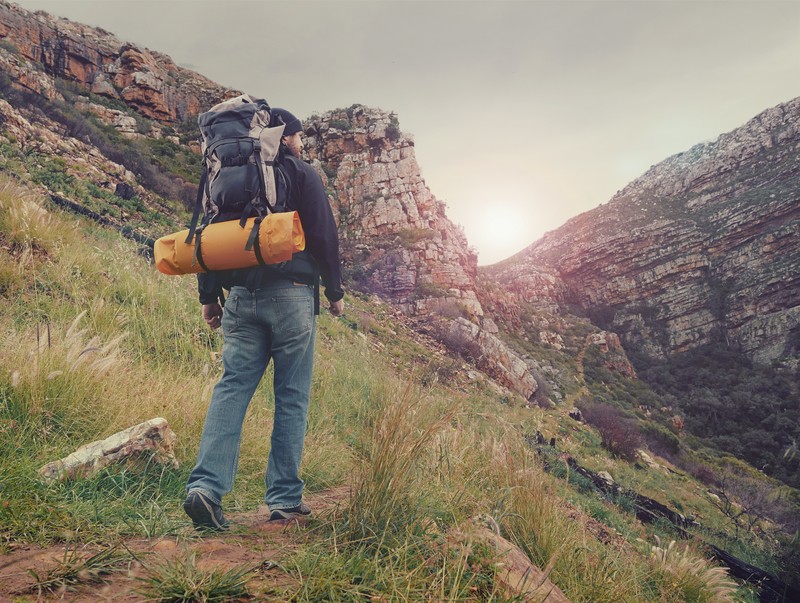You may be asking: What are the three inventories? 1) What’s on you. 2) What’s in your immediate area. 3) What’s in your extended surroundings.
1: What’s on you
Obviously, you probably didn’t mean to find yourself in a survival situation. You may have slid on the ice, off the side of the road at night, and landed 200 feet down an embankment with no way back up to the road. You may have just swum ashore after your sailboat hit a whale. Whatever. In a lot of cases, you may not have time to go get what you need to survive, and you may not know the people you’re now facing this stuff with.
First thing you need to do after you’re in a safe spot and have taken care of anything immediate is get accountability. Who do you have? Is anyone wounded? What skills do you all have? When possible, you should have one person responsible for something if they’re an expert, such as a former medic being responsible for medical stuff. You won’t always know that unless you ask. This is just a quick check of skills for things that are immediately facing you.
Have everyone gather around and pull out everything they have in their pockets out in front of them. Make sure everyone can see what everyone else has so you have a group inventory. If you’re the leader, you need to at least lay your eyeballs on every piece of equipment that everyone has.
In these cases, you may find that the only thing you have on you at the time is your EDC kit. You can put together a cheap EDC kit yourself or just buy one like the ESEE Survival kit but just make sure you always carry something with you at all times. You never know when you’ll need it.2: What’s in your immediate area?
Once you’ve laid out what’s on you, take a look at what’s within view. What’s the weather? How much daylight do you have? What kind of food is probably in the area? What could you use for shelter right now? Where’s the most likely place water could be? Do you have everything you need for water, food, shelter, fire, etc right here or do you need to head out to get those things? Would it make sense to set up camp here and send out scouts for a few things?
Mission: In the case of a survival situation, the mission is to get back to civilization as soon as possible, with no further casualties.
Enemy: The enemy is most likely the environment, but you could also be facing animals or even human threats.
Terrain: Terrain is a big one. Unfortunately, you may not be able to get a full view of what your terrain is at this stage of the game. You do want to know what kind of trees there are, if water is plentiful or not, and if there’s a danger of crevices or cliffs etc to face if you send out scouts to find things.
Troops: You may have started this in the first inventory but this is where you need to be really working it. Find out everyone’s background, both by profession and hobby. Ask specific questions regarding things like survival training, medical training, climbing skills, etc.
Time: Time may affect what you’re facing as well. If you’re in the frozen tundra, you need to move quickly. If you’re in the middle of Appalachia in the springtime, you probably have more time.3: What’s in your extended surroundings?
The third inventory you need to take is what’s not in your immediate view. Now that you have a decent idea of what you have on you and in the immediate area, you should have an idea of what you need to find.
The best way to do this is almost always to get a high vantage point. Climb a tree or get to the top of a hill. Look around and see what’s all around. The first vantage point you find may just be to find you a better vantage point. This is sometimes one of the most dangerous things you’ll do.
When you’re at the vantage point, take a look at how the land flows. Water always goes downhill. Civilization always needs water so you’ll be more likely to find them around it.
Pay attention to cuts through the vegetation. In some cases, this may be a stream but in a lot of cases, it could be a road, a powerline, or a pipeline.
Compare your area to what’s around. If you’re in an area that has no plants, you probably won’t find many animals or much water. See what may be better.
Once you’ve gotten a good image in your head or written it down (even better), go back to the group and come up with a game-plan. Keep everything in mind that you’ve seen in case it comes up later.
Simple, right? Actually, it is a lot to take in but no wiser words have ever been said!
Have a “game plan” for everything you do pre SHTF and when it comes about you ill have a foot up on everyone else around you. Or, at least, those who have not been preparing for a chaos situation!
To learn more about the three inventories go over to Graywolf Survival.

I agree completely. Chances are you won’t have much on you. Many people won’t have any kind of cutting tool.
CHALLENGE: Take a walk around your neighborhood. Look for things just off the side of the road or in garbage cans. Collect them, take them home and see what you can make from them to effect your survival.